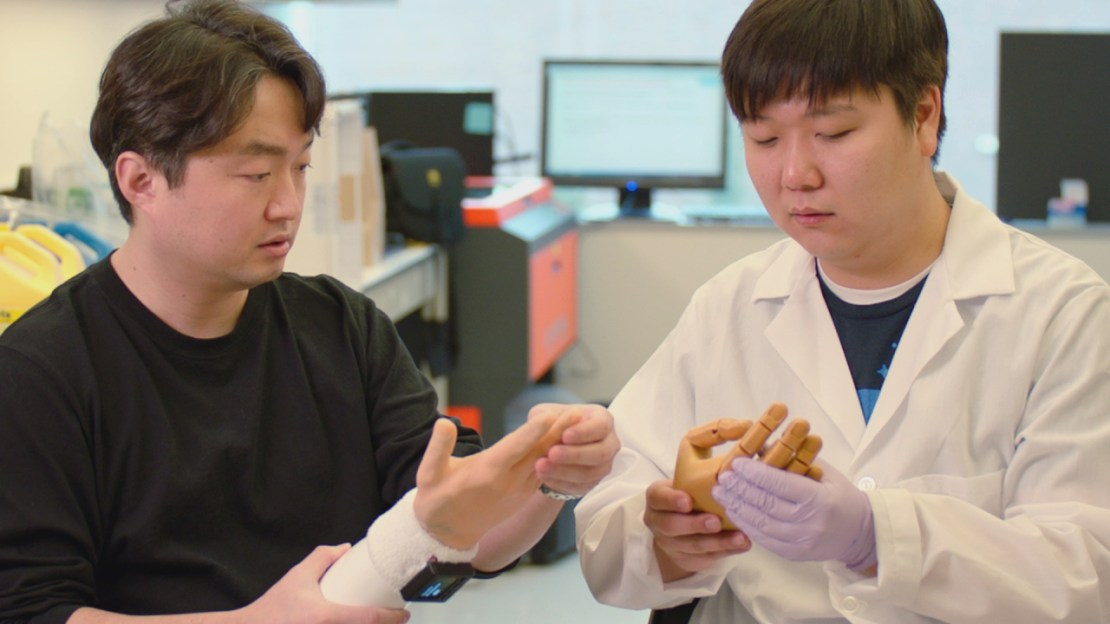John Tolley, March 7, 2020
Our hands do so much more than just help us hold on to the world. They grip, but they also sense tactile surfaces and gradients in temperature. They detect pressure and weight to assist us in manipulating items and bracing ourselves.
When a person loses a hand or an arm, most commercially-available prosthesis can not replace all that lost functionality. While there are a few that models that employ built-in sensors, they are often prohibitively expensive and suffer from incongruities between structural needs and sensor performance.
That may soon change, though, as Purdue University biomedical engineers refine a broad-spectrum sensor array device that is both affordable and adaptable. As project lead Chi Hwan Lee, an assistant professor of biomedical engineering, notes, there is great opportunity to incorporate electronics into passive prosthetic hands.
?We got the idea that we want to build a multi-modal sensors systems or stretchable flexible sensor systems on top of commercially available rubber glove,? Lee explains. ?That allows you to be very well fit to almost any kind of hand shapes; that?s the key idea.?
The device - called the e-glove - features several thin, flexible multimodal sensors linked to miniaturized silicon microchips that process the biofeedback. An affordable substrate - nitrile rubber gloves - house the sensor array and supporting tech.
The e-glove comes in a variety of skin tones and fits over almost any prosthetic hand on the market. Lee and his research team can even mold individual models to match the contours of a person?s hands, which goes a long way in restoring confidence in social interactions
?We've added an encapsulation on top that makes it look like a real hand,? says Min Ku Kim, a biomedical engineering doctoral student working with Lee. ?We borrowed some tricks from the special effects department and moviemaking, so we can actually take a mold of a real hand and then encapsulate the outer surface of the glove with this function.?
Lee points out that with 3 million individuals in the US using some sort of prosthetic hand, the need for improvement is considerable. That has prompted a bevy of research geared towards designing the next-generation of prosthesis. While Lee and his team are very much working in that lane, the point of differentiation lies in the affordable and adaptable nature of their design.
?This is not just developing new technology, I?m trying to employ technology to tackle the actual practical problems existing there,? says Lee. ?I want to employ engineering techniques, materials and technologies to develop something useful and practical devices that can be implemented into the clinical settings. I mean, I?m talking about one or two years later, I?m not talking about ten to twenty years. I?m a biomedical engineer so I want to do somewhere practical engineering things to help the people so in need.?







 See what's coming up live on B1G+ every day of the season at BigTenPlus.com.
See what's coming up live on B1G+ every day of the season at BigTenPlus.com. 